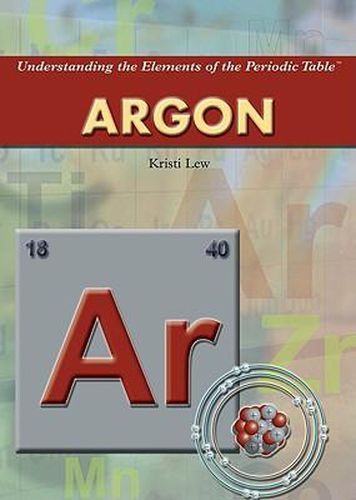Readings Newsletter
Become a Readings Member to make your shopping experience even easier.
Sign in or sign up for free!
You’re not far away from qualifying for FREE standard shipping within Australia
You’ve qualified for FREE standard shipping within Australia
The cart is loading…






Argon (Ar) is the third most abundant gas in the atmosphere after nitrogen and oxygen. In 1894, argon was discovered by the chemists Sir William Ramsay and Lord Rayleigh when they removed all the oxygen and nitrogen from the air in an experiment. Readers learn about the use of argon in incandescent and fluorescent light bulbs, and about inert and noble gases. Atomic argon will also be explained, along with the octet rule, Argon’s place on the periodic table, and how argon is formed by the radioactive decay of long-lived, radioactive potassium-40. Readers will learn how potassium-argon is used in dating rocks and minerals. Various industrial uses of argon are also examined.
$9.00 standard shipping within Australia
FREE standard shipping within Australia for orders over $100.00
Express & International shipping calculated at checkout
Argon (Ar) is the third most abundant gas in the atmosphere after nitrogen and oxygen. In 1894, argon was discovered by the chemists Sir William Ramsay and Lord Rayleigh when they removed all the oxygen and nitrogen from the air in an experiment. Readers learn about the use of argon in incandescent and fluorescent light bulbs, and about inert and noble gases. Atomic argon will also be explained, along with the octet rule, Argon’s place on the periodic table, and how argon is formed by the radioactive decay of long-lived, radioactive potassium-40. Readers will learn how potassium-argon is used in dating rocks and minerals. Various industrial uses of argon are also examined.